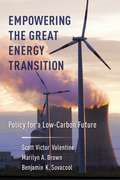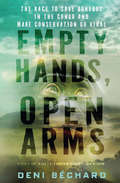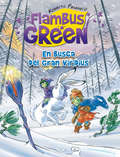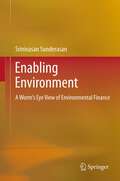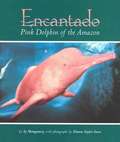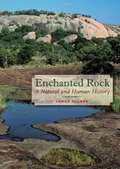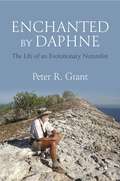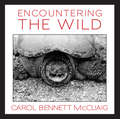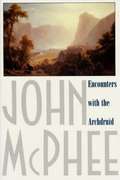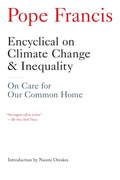- Table View
- List View
Empowering Climate Action in the United States (Resetting Our Future)
by Tom BowmanAn ACE National Strategic Planning Framework for the United States is a game changer for climate action. After decades of inspired but fragmented efforts, 150 highly diverse Action for Climate Empowerment (ACE) leaders joined forces in 2020 to build a strategic roadmap for encouraging, informing, and empowering the public to tackle the climate crisis. Their goal: push the United States and other nations to meet - and exceed - the targets of the Paris Agreement in the fastest and most equitable way possible, namely, by empowering the people.
Empowering the Great Energy Transition: Policy for a Low-Carbon Future
by Scott Valentine Benjamin Sovacool Marilyn BrownAt a time when climate-change deniers hold the reins of power in the United States and international greenhouse gas negotiations continue at a slow crawl, what options are available to cities, companies, and consumers around the world who seek a cleaner future? Scott Victor Valentine, Marilyn A. Brown, and Benjamin K. Sovacool explore developments and strategies that will help fast-track the transition to renewable energy. They provide an expert analysis of the achievable steps that citizens, organizational leaders, and policy makers can take to put their commitments to sustainability into practice.Empowering the Great Energy Transition examines trends that suggest a transition away from carbon-intensive energy sources is inevitable—there are too many forces for change at work to stop a shift to clean energy. Yet under the status quo, change will be too slow to avert the worst consequences of climate change. Humanity is on a path to incur avoidable social, environmental, and economic costs. Valentine, Brown, and Sovacool argue that new policies and business models are needed to surmount the hurdles separating the current consumption model from a sustainable energy future. Empowering the Great Energy Transition shows that with well-placed efforts, we can set humanity on a course that supports entrepreneurs and communities in mitigating the environmental harm caused by technologies whose time has come and gone.
Empty
by Suzanne WeynA dystopic look at what happens to one American town when all the fossil fuels run out...It's the near future - the very near future - and the fossil fuels are running out. No gas. No oil. Which means no driving. No heat. Supermarkets are empty. Malls have shut down. Life has just become more local than we ever knew it could be.Nobody expected the end to come this fast. And in the small town of Spring Valley, decisions that once seemed easy are quickly becoming matters of life and death. There is hope - there has to be hope - just there are also sacrifices that need to be made, and a whole society that needs to be rethought.
Empty Hands, Open Arms: The Race to Save Bonobos in the Congo and Make Conservation Go Viral
by Deni Ellis Béchard&“Absorbing . . . Béchard&’s masterful, adventure-driven reporting delivers an inspiring account of an all-too-rare ecological success story.&” —Booklist Bonobos have captured the public imagination, due not least to their famously active sex lives. Less well known is the fact that these great apes don&’t kill their own kind, and that they share nearly 99% of our DNA. Their approach to building peaceful coalitions and sharing resources has much to teach us, particularly at a time when our violent ways have pushed them to the brink of extinction. Animated by a desire to understand bonobos and learn how to save them, Deni Ellis Béchard traveled into the Congo. Empty Hands, Open Arms is the account of this journey. Along the way, we see how partnerships between Congolese and Westerners, with few resources but a common purpose and respect for indigenous knowledge, have resulted in the protection of vast swaths of the rainforest. And we discover how small solutions—found through openness, humility, and the principle that poverty does not equal ignorance—are often most effective in tackling our biggest challenges. Combining elements of travelogue, journalism, and natural history, this incomparably rich book takes the reader not only deep into the Congo, but also into our past and future, revealing new ways to save the environment and ourselves. &“Riveting [and] surprisingly uplifting.&” —David Suzuki, author of The Sacred Balance &“The embodiment of the type of reporting that we dream of reading, but all too rarely encounter—intelligent, engaged, and above all, astonishingly perceptive.&” —Dinaw Mengestu, author of The Beautiful Things That Heaven Bears Also published as Of Bonobos and Men.
Empty Pastures: Confined Animals and the Transformation of the Rural Landscape
by Terence J. CentnerOver the past century American agriculture has shifted dramatically with small, commercial farms finding it increasingly difficult to compete with large-scale (mostly indoor) animal feeding operations (AFOs). In this book, Terence J. Centner investigates the environmental, social, economic, and political impact of the rise of the so-called factory farm, exposing the ramifications of the contemporary trend toward industrial-scale food production. Just as Rachel Carson's landmark Silent Spring used the disappearance of songbirds as a jumping-off point for a work that raised public awareness of pesticides' devastating environmental impact, Empty Pastures sees the dwindling numbers of livestock in the American countryside as a symptom of a broader transformation, one with serious consequences for the rural landscape and its inhabitants--animal as well as human. After outlining the rise of the AFO, Centner examines the troubling consequences of consolidation in animal farming and suggests a number of remedies. The issues he tackles include groundwater contamination, the loss of biodiversity, animal welfare, concentrated odors and other nuisances, soil erosion, and the economic effects of the disappearance of the small family farm. Inspired by largely abandoned traditional practices rather than a radical and unrealistic vision of a return to an idealized past, Centner proposes a series of pragmatic reforms for regulating factory farms to halt ecological degradation and revitalize rural communities.
Emulating Natural Forest Landscape Disturbances: Concepts and Applications
by Ajith H. Perera Lisa J. Buse Michael G. WeberThis comprehensive collection of provocative papers provides a scientific foundation for justifying the use of and a solid framework for examining the ambiguities inherent in emulating natural forest landscape disturbance. Contributors range from policymakers and forestry professionals to academics and conservationists, offering a balanced view of the promises and challenges of the forest management paradigm in sustaining forest landscapes.
Emulating Natural Forest Landscape Disturbances: Concepts and Applications (Forest Research Information Paper Ser. #No. 149)
by Lisa J. Buse Michael G. Weber Eds. Perera Ajith H.What is a natural forest disturbance? How well do we understand natural forest disturbances and how might we emulate them in forest management? What role does emulation play in forest management? Representing a range of geographic perspectives from across Canada and the United States, this book looks at the escalating public debate on the viability of natural disturbance emulation for sustaining forest landscapes from the perspective of policymakers, forestry professionals, academics, and conservationists. This book provides a scientific foundation for justifying the use of and a solid framework for examining the ambiguities inherent in emulating natural forest landscape disturbance. It acknowledges the divergent expectations that practitioners face and offers a balanced view of the promises and challenges associated with applying this emerging forest management paradigm.The first section examines foundational concepts, addressing questions of what emulation involves and what ecological reasoning substantiates it. These include a broad overview, a detailed review of emerging forest management paradigms and their global context, and an examination of the ecological premise for emulating natural disturbance. This section also explores the current understanding of natural disturbance regimes, including the two most prevalent in North America: fire and insects. The second section uses case studies from a wide geographical range to address the characterization of natural disturbances and the development of applied templates for their emulation through forest management. The emphasis on fire regimes in this section reflects the greater focus that has traditionally been placed on understanding and managing fire, compared with other forms of disturbance, and utilizes several viewpoints to address the lessons learned from historical disturbance patterns. Reflecting on current thinking in the field, immediate challenges, and potential directions, the final section moves deeper into the issues of practical applications by exploring the expectations for and feasibility of emulating natural disturbance through forest management.
En busca del Gran Viridius (Saga Flambus Green #Volumen)
by Roberto Pavanello¡El jefe supremo de los dusig ha desaparecido! Didí y Flambus no pararán hasta averiguar qué le ha ocurrido. Flambus y los demás duendes de Futura están muy preocupados porque desde hace días no tienen noticias del Gran Viridius, el duende más anciano y sabio de los dusig, que está de viaje en una peligrosa misión. Didí ha decidido salir a buscarle inmediatamente. Por supuesto, su inseparable amigo Flambus partirá con ella. ¿Conseguirán los dos valientes duendes encontrar al Gran Viridius? «Yo, Flambus Green, juro defender los árboles que me han sido confiados a costa de mi propia vida y hacer buen uso de la verdesavia que recibiré en ofrenda»
En la calle de las Praderas (¡Arriba la Lectura!, Read Aloud Module 7 #2)
by Henry ColeNIMAC-sourced textbook
En noviembre (¡Arriba la Lectura!, Trade Book #6)
by Cynthia Rylant Jill KastnerNIMAC-sourced textbook
Enabling Asia to Stabilise the Climate
by Shuzo NishiokaThis book presents good practices in Asia and ASEAN countries for effectively promoting advances in response to climate change, which can help to achieve sustainable development in Asia and around the world. As a proposal, the aim is to influence the discussions at COP 21 by providing a positive agenda with concrete actions from an Asian perspective. The book is divided into three parts. Part 1 describes the greenhouse gas (GHG) reduction scenario from an Asian perspective and in line with global 2 ° targets. Based on modeling analysis, the studies demonstrate the theoretical potentials and send the policymakers at COP 21 the positive message that "Asia can reach the target. " As Asian countries vary in terms of their economic strength, country-specific scenario studies for the two giants China and India as well as for Japan and Vietnam are introduced to show the different approaches for each country. Part 2 shows successful examples of how modeling analysis are reflected in actual policy development, which provides practical guidelines to help policymakers develop their own roadmaps with stakeholder dialogue, not only in Asia but also in other regions of the world. The Nationally Appropriate Mitigation Action (NAMA) roadmap development in Thailand as well as the Iskandar Malaysia project show at the country and city level how researchers and policymakers are working closely to succeed. Part 3 focuses on a number of sector-specific activities including transportation, forestry, capacity development, and inventory work in Asia. Rather than discussing the Low Carbon Society (LCS) concept in detail, the respective chapters highlight unique, concrete, and practically applicable examples from Asia, showing how Asian countries are addressing climate change mitigation issues in a collaborative manner, an approach that can be replicated in other regions. While the ultimate goal of this book is to facilitate international climate regime making, local government and international organizations (United Nations, World Bank, and others) officers, researchers, international NGO/NPOs, consultants, students (particularly those studying international relationships or environmental studies), as well as reporters will find this book useful in broadening their understanding of low-carbon development in Asia.
Enabling Environment
by Srinivasan SunderasanEnabling Environment is as real as it gets. The global commons are jointly owned and their inhabitants are jointly obligated to ensure their preservation. In the face of protracted negotiations, convoluted documentation, discord, and incessant bickering among scientists, activists, pressure groups of various hues, politicians and negotiators, very often the people on the ground are ignored or taken for granted. In the meantime, life meanders along. It is these 'everyday individuals' who make consumption-related choices on their lifestyles, travel or on preferring certain products or services over others. Enabling Environment puts the individual front and center. Ecosystem services need to be recognized, appropriately priced and the costs allocated to the agents concerned. Enabling Environment is about defining economic and non-economic incentive structures and utilizing them to arrive at pro-environmental outcomes. This collection of articles illustrates the use of existing social, economic and regulatory structures, and the financial architecture and instruments, suitably modified or extended, to help internalize the environmental externality.
Encantado
by Sy Montgomery Dianne Taylor-SnowWelcome to a forest filled with water. In the wet season, the swollen Amazon becomes a looking glass into another world, where pink dolphins swim like something from a dream. In Peru they are called bufeo colorado-the ruddy dolphin. Their color ranges from white to gray to a vivid pink. These astonishing mammals, actually river-dwelling whales, easily navigate their way through the complex, hazardous world of the Amazon rain forest. Encantado invites readers on the adventure of a lifetime as we travel into one of the world's most lush and beautiful jungles in search of these magical creatures. Our guides include scientists and researchers as well as the local people, who have lived with the encantados-the enchanted ones-literally at their doorsteps for centuries. Our main guides are the dolphins themselves. They lead us into myth. They take us back in time to a prehistoric era. They alone can show us the depth of the Amazon's beauty, diversity, and magic-and help us to keep our planet rich and whole.
Enchanted Childhoods: Growing Up in Yosemite, 1864-1945
by Shirley SargentReunion of people from Yosemite Elementary School, the meeting of over fifty alumni and their youthful experiences in Yosemite.
Enchanted Foraging: Wildcrafting for Herbal Remedies, Rituals, and a Magical Life
by Ebony GheorgheEmbark on your foraging journey and cultivate a more meaningful, magical relationship with nature. No matter where you live, natural resources are all around you. These pieces of nature hold inherent properties—and inherent magic—that could be useful to you, and they are often hiding in plain sight. In this book, divided into chapters by season, you'll find: Tips for foraging correctly, mindfully, and sustainably Instructions for teas, balms, decoctions, and other herbal remedies made out of foraged ingredients and materials Wildcrafts for rituals that usher in the new season, inspired by mystical folk practices around the world And more! With practical advice for novice foragers and sidebars on how different cultures have connected with the greatest mystic of all, Mother Earth, Enchanted Foraging explores plants and their various uses not just for consumption but for their intrinsic value. Readers will come away with a more complete knowledge of, and appreciation for, the world that lies just beyond their doors--its abundance, hidden applications, and how it makes enchanted beings of us all.
Enchanted Rock: A Natural and Human History
by Lance AllredWith intriguing domes of pinkish granite surrounded by a sea of Hill Country limestone, Enchanted Rock State Natural Area attracts over 300,000 visitors every year who come to the park to hike, rock climb, spelunk, camp, picnic, and observe birds and wildflowers. Geologists from around the world come to Enchanted Rock to examine landforms that were shaped by forces on ancient continents of Earth more than one billion years ago! All of these visitors, however, are only the latest comers in a line of human history that stretches back 13,000 years to early Native Americans and includes Spanish explorers, Mexican and German settlers, and thirteen private and public owners up to the current owner, the state of Texas. Surprisingly, given the area's wealth of unusual geology, native plants and animals, and human history, no comprehensive guide to Enchanted Rock has been published before now. In Enchanted Rock, you'll find everything you need to fully appreciate this unique place. Lance Allred draws on the work of specialists in many fields to offer a popular account of the park's history, geology, weather, flora, and fauna. Whether you want to know more about how Enchanted Rock was formed, identify a wildflower or butterfly, or learn more about plant communities along the hiking trails, you'll find accurate information here, presented in an inviting style. Over a thousand color photographs illustrate the enjoyable text.
Enchanted by Daphne: The Life of an Evolutionary Naturalist
by Peter R. GrantThe extraordinary life story of the celebrated naturalist who transformed our understanding of evolutionEnchanted by Daphne is legendary ecologist Peter Grant’s personal account of his remarkable life and career. In this revelatory book, Grant takes readers from his childhood in World War II–era Britain to his ongoing research today in the Galápagos archipelago, vividly describing what it's like to do fieldwork in one of the most magnificent yet inhospitable places on Earth. This is also the story of two brilliant and courageous biologists raising a family together while balancing the demands of professional lives that would take them to the far corners of the globe.In 1973, Grant and his wife, Rosemary, embarked on a journey that would fundamentally change how we think about evolution. Over the next four decades, they visited the Galápagos every year to observe Darwin’s famous finches on the remote, uninhabited island of Daphne Major. Documenting how eighteen species have diversified from a single ancestral species, they demonstrated that we could actually see and measure evolution in a natural setting. Grant recounts the blind alleys and breathtaking triumphs of this historic research as he and Rosemary followed in Darwin’s footsteps—and ushered in a new era in ecology.A wonderfully absorbing portrait of a life in science, Enchanted by Daphne is an unforgettable chronicle of the travels and discoveries of one of the world’s most influential naturalists.
Enchantment and Exploitation: The Life and Hard Times of a New Mexico Mountain Range, Revised and Expanded Edition
by William deBuysFirst published in 1985, William deBuys&’s Enchantment and Exploitation has become a New Mexico classic. It offers a complete account of the relationship between society and environment in the Sangre de Cristo Mountains of northern New Mexico, a region unique in its rich combination of ecological and cultural diversity. Now, more than thirty years later, this revised and expanded edition provides a long-awaited assessment of the quality of the journey that New Mexican society has traveled in that time—and continues to travel.In a new final chapter deBuys examines ongoing transformations in the mountains&’ natural systems—including, most notably, developments related to wildfires—with significant implications for both the land and the people who depend on it. As the climate absorbs the effects of an industrial society, deBuys argues, we can no longer expect the environmental future to be a reiteration of the environmental past.
Enclosed Experimental Ecosystems and Scale
by W. Michael Kemp John E. Petersen William C. Dennison Victor S. KennedyEnclosed ecosystem experiments have gained in popularity as research tools in ecological science, particularly in the study of coastal aquatic environments. These systems provide scientists with a degree of experimental control that is not achievable through field experiments. Yet to date, techniques for systematically extrapolating results from small-scale experimental ecosystems to larger, deeper, more open, more biologically diverse, and more heterogeneous ecosystems in nature have not been well developed. Likewise, researchers have lacked methods for comparing and extrapolating information among natural ecosystems that differ in scale. Enclosed Experimental Ecosystems and Scale: Tools for Understanding and Managing Coastal Ecosystems provides scientists, managers, and policy makers with an introduction to what has been termed the "problem of scale", and presents information that will allow for improved design and interpretation of enclosed experimental aquatic ecosystems. The book integrates the results of a 10-year research project involving a multi-disciplinary team of scientists and students to explore scale-related questions in a variety of coastal habitats. Anticipating use as a reference, the book has been designed so that individual sections and individual pages can function as stand alone units.
Encountering the Wild
by Carol Bennett MccuaigPoison Ivy Acres, 250 acres of wilderness in Renfrew County, Ontario, long dedicated to the preservation of natural habitat, has been home to nature writer Carol Bennett McCuaig for many years. Her keen powers of observation, coupled with her insights into wildlife behaviour and her evocative writing style, have produced this captivating collection of stories. Whether noting the courtship rituals of turkey vultures and red foxes or finding a black bear on her roof, an ermine in her bedroom, and a cougar on her lawn, Carol is always surrounded by the delights and challenges of living in a wilderness setting. Even night visitors bring joy, including flying squirrels at the bird feeder, a whippoorwill peering in a window, and a midnight standoff between a porcupine and a skunk. Encountering the Wild is a delightful book that will appeal to country lovers in Canada and beyond.
Encounters With The Archdruid
by John McpheeThe narratives in this book are of journeys made in three wildernesses - on a coastal island, in a Western mountain range, and on the Colorado River in the Grand Canyon. The four men portrayed here have different relationships to their environment, and they encounter each other on mountain trails, in forests and rapids, sometimes with reserve, sometimes with friendliness, sometimes fighting hard across a philosophical divide.
Encounters with Florida's Endangered Wildlife
by Doug AldersonEastern bison roamed Florida into the 1800s. Red wolves disappeared in the 1920s. The dusky seaside sparrow was declared extinct in 1990.It's too soon to say whether the 116 threatened, endangered, or imperiled animal species currently found in the state will also fall victim to climate change, extermination, overdevelopment, or poisons. But as long as they remain, there will be men and women who work tirelessly on their behalf.Combining adventure, natural history, and cultural history, Encounters with Florida’s Endangered Wildlife features chapters tracking panthers, black bears, whooping cranes, manatees, sea turtles, even ivory-billed woodpeckers--which may or may not be extinct. Join Doug Alderson as he travels into prairies, woods, springs, and ocean to come face to face with these and other captivating creatures and learns firsthand about their strangled lives and fragile habitats.With a chapter on the impact of non-native populations of Burmese pythons and Rhesus monkeys, as well as a chilling epilogue that imagines the peninsula one hundred years in the future, this book is a must-read for anyone who wants to know more about the current state of wild Florida.
Encounters with Nature Spirits: Co-creating with the Elemental Kingdom
by R. Ogilvie CrombieA fascinating, first-hand account of the vast powers and true nature of the Elemental Kingdom • Reveals deep wisdom, eloquently shared through the author’s encounters with the great God Pan and his elemental subjects • Offers a glimpse into the hidden layers of the natural world and the workings of the elemental kingdom • Includes chapters by Mike Scott, David Spangler, Dorothy Maclean, and Brian Nobbs as well as beautiful illustrations by fine artist Elise Hurst, who perfectly captures the energy of the natural world and its subjects as we might perceive them “To anyone who may have expressed a wish to see and talk to nature spirits . . . remember it took 63 years for my wish to be granted, so don’t lose hope.” Have you ever wished for something with your whole heart? As a child, R. Ogilvie Crombie (Roc) made a wish as he dropped a penny into a wishing well - he asked to be able to see fairies and talk to them. In Encounters with Nature Spirits, we follow Roc’s path as, many years later, he meets the faun Kurmos in the Royal Botanic Garden in Edinburgh, discovers the realm of the elementals, and, eventually, meets the great god Pan himself. In his conversations with Pan, elves, and other nature spirits Roc realizes that the elemental realm is vastly more powerful than our human kingdom and possesses an ability to create far beyond our human means. Through his experiences Roc becomes closely involved with the Findhorn Community in northeast Scotland where he meets further elementals who give him sound advice as to how the famous Findhorn gardens should be cared for in order to work in harmony with nature. Encounters with Nature Spirits is a reminder to us all of the importance of our relationship with the nature kingdom. Through his example, Roc places emphasis on connecting and working in harmony with nature spirits. True co-creation with nature, working with rather than against the elemental kingdom, can bring about vital positive change to our endangered eco-system. The elementals are open to working with mankind--the question is, are we humans open to engaging with and respecting them again?
Encyclical on Climate Change and Inequality
by Pope Francis Naomi OreskesThe complete text of the landmark encyclical letter from Pope Francis that, as Time magazine reported, "rocked the international community"In the Encyclical on Climate Change and Inequality, the beloved Pope exhorts the world to combat environmental degradation and its impact on the poor. In a stirring, clarion call that is not merely aimed at Catholic readers but rather at a wide, lay audience, the Pope cites the overwhelming scientific evidence of climate change, and does not hesitate to detail how it is the result of a historic level of unequal distribution of wealth.It is, in short, as the New York Times labeled it, "An urgent call to action . . . intended to persuade followers around the world to change their behavior, in hopes of protecting a fragile planet." With an insightful and informative introduction by Harvard professor Naomi Oreskes, famed for her bestselling Merchants of Doubt: How a Handful of Scientists Obscured the Truth on Issues from Tobacco Smoke to Global Warming.From the Trade Paperback edition.
Encyclopedia Brown's Book of the Wacky Outdoors
by Donald J. SobolA collection of humorous anecdotes, most of which are true, about outdoor life, with an emphasis on fishing and hunting.

